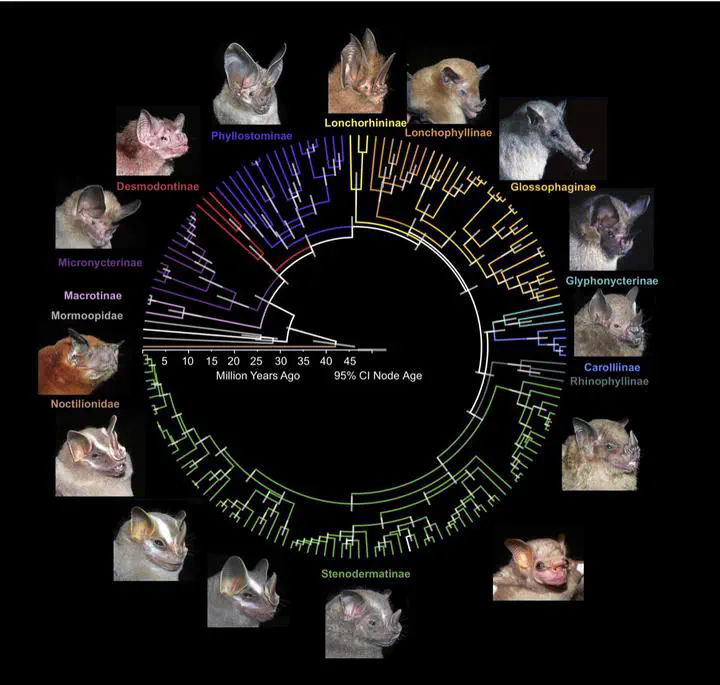
Abstract
This book discusses in detail the adaptive radiation of American leaf-nosed bats (Phyllostomidae), the most diverse family morphologically, behaviorally, and trophically of all bats. It is divided into five major sections that cover the family’s evolution, classification, and historical biogeography; many aspects of its basic biology; its trophic, population, and community ecology; and its conservation. Because of its biological diversity, this family can serve as a model system for understanding the adaptive radiation of mammals in the last half of the Cenozoic Era.
Type
Publication
T.H. Fleming, L.M. Dávalos, and M.A.R. Mello (eds.). Phyllostomid bats: A Unique Mammalian Radiation (pp. 3-5). Chicago: University of Chicago Press